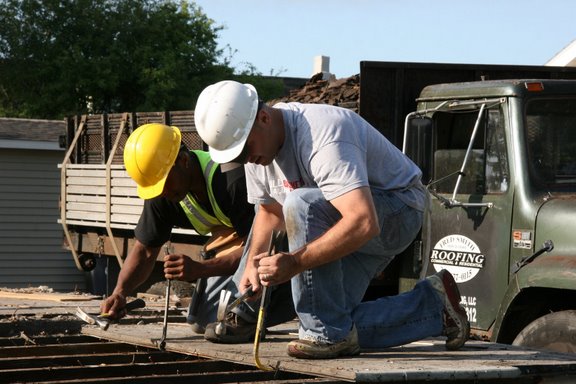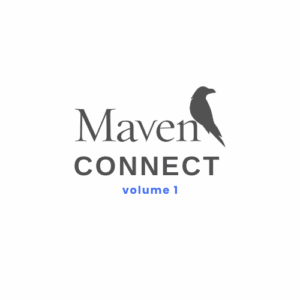
Josh Stack, a lawyer and biomimicry expert, combines his legal and scientific expertise to counsel project teams and cities on resilience and biomimicry for complex projects, building sustainable structures that are integrated with the local environment. He sat down with us to explain what biomimicry is, and how it can inform and better integrate the human and natural worlds.
I see your education background is in biology and law. Did you see how those fields might connect from the very beginning, or is this something you wove together as you went on?
For a while, I was unsure what direction I wanted to pursue. In undergrad I studied biology (and loved it!) but I knew that I didn’t want to go to medical school or devote my life to a specific field of research. I took two years off and worked for my family business, doing everything from construction management to design support and consulting. I then attended law school, but wasn’t sure I actually wanted to practice law. I went into practice just to be sure it wasn’t for me. I went back to work with my dad for a short time, who was focused on sustainable design and construction. Everything he did related to the surrounding world, and how to learn from nature and build with the land in mind. That was also when the US Green Building Council and biomimicry movement was emerging in a big way. I studied biomimicry more seriously and did a training course in a Peruvian rainforest with Janine Benyus and Dayna Baumeister. That’s really what created this opportunity – continually bumping up against these principles as I researched how to counsel clients in building responsibly, with nature and the land.
I see you also lead the Biomimicry Northern Forest regional network. Can you tell me a little more about that?
It is a regional network that is part of a global network managed by Biomimicry 3.8, which aims to bring biomimicry into design, engineering, and planning. The goal is create a global community of biomimics, encouraging those practicing in the field to form their own regional network, bringing the diversity of communities together.
Our network’s current initiative is around the concept of Genius of Place, e.g., how can cities become more resilient by functioning more like the healthy ecosystems in which they are immersed? How can you take any system (like a city, university or building) look to the surrounding living system, and see how the man-made structure could be functionally similar to the natural surroundings? We look at this region, upstate New York, and help designers, city officials, and builders learn how the ecosystems and local species have solved the same functional problems we face — storm water management, food production, energy and consumption, etc. The next step is applying those solutions to our built environment.
There is a 3-part process that guides our work:
- We remember the historical cultural and ecological systems, by looking to how this region operated before colonial development. In this area, the Haundensaunee Confederacy existed (and still does) as the world’s oldest living democracy. It’s interesting to see the laws and policies they instituted as a culture to ensure peace, resilience and ecological sustainability. Often, traditional ecological knowledge is dismissed as a myth, but when researchers look at the values, beliefs, government systems of these cultures they frequently find that these structures contain immense functional adaptive ecological knowledge, due to their deep observation of place over time. We look at how earlier cultures and nature itself solved the same functional challenges that we currently encounter when trying to solve for sustainability, or whatever it may be. This gives us elegant, local, inherently resilient and replicable solutions.
- We make our findings quantifiable in our evaluation of the current or extant communities. In the City of Syracuse, there used to be a mosaic of ecosystem types that handled different needs of the environment, like air or water purification. We calculate how many cubic feet of water a particular swamp purified, and think of ways continue to meet that need. What living infrastructure can we put in place to ensure the ecosystem remains healthy? For example, if we were to build a green roof or infrastructure, we recommend mimicking the design of native or well-adapted ecosystems, and choose the plant life in accordance with the specific needs of the surrounding ecosystem, such as water management or pollination, to attain a higher level of function and performance.
- We deliberate for the resilience of our children’s world. We want to ensure the adaptive health of future generations and make sure our solutions are geared toward that end.
Can you tell me a little more about resilience science, and how that differs from biomimicry?
Biomimicry studies the design of biological life and the common principles life self-organizes itself around. Janine Benyus and Dayna Baumeister were pioneers in this field, asking if there were any common patterns or design principles that continue to guide life after 3.8 million years. They came up with life’s deep principles, one of which is resilience. This is the idea that design elements in nature are far more powerful, transformative and elegant than our own, human-made systems.
“Resilience science” is separate but closely aligned with biomimicry principles. The Stockholm Resilience Center is a leading organization in resilience science, focused on pragmatic research.
I see that you advise clients on how to translate and apply resilience science, biomimicry and the sciences of life to design projects and strategic sustainability initiatives. How does that work?
Most of the time, our clients are already interested in sustainability, but not always. We recently did a pilot project around tax-delinquent homes. Typically, people think the solution to the problems delinquent homes cause is to demolish them. From a biomimicry perspective, there is no waste – even a tree’s dead leaves provide nutrients for future growth. Though we didn’t want to waste materials, our competition was happy to do it. We realized we needed to adapt quickly to stay competitive, so we looked into deconstruction rather than demolition, recycling as much as we could. This led to projects with communities to salvage and repurpose old homes. Clients didn’t retain us for biomimicry purposes, but were interested in salvaging building materials and creating community value. This work has compelling economical, equitable and ecological benefits.
What gives you the most hope about conservation and biomimicry moving forward?
I’m hopeful because I have small children. I know I need to take care of this land and learn from it, because this land is what also takes care of my children and me. I find hope in the fact that most of the solutions and answers we seek already exist. Our policy, legal, and social frameworks are slow to react, but the living world is already adapting to these massive changes in the world. There are so many solutions that we can identify at a community level, make a few basic changes, and not only slow the damage humans have caused but support the restoration of the land and how we live within our communities.
Thank you for sharing your insights with us, Josh!
Related Post
Categories
Recent Articles

Maven Connect | Volume 1

Expert Interviews: The Secret Weapon for Winning Product Strategy

Unlock Workforce Potential with Open Talent Networks | Boost Efficiency & Innovation

Has the world of consulting changed forever?

Internal talent marketplace

